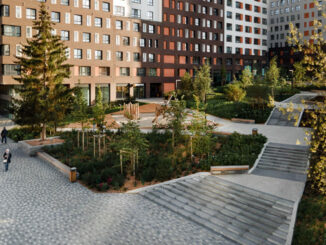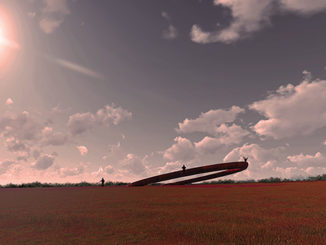Industrial wasteland and the ecological consequence remains as an unsettling crisis and has become a universal issue in the development of the city, including the site which included oil tank factory surrounded by several residential lands under the background of global energy transformation. So we tried to explore the possibility of an interconnected relationship among industry, nature and the development of the city. It is also an important issue of protecting and utilizing the relics of the post-industrial age. This post-industrial park imprint the memories of Hongkou in people’s mind by providing an inviting spatial experience within the industrial facilities. By transforming the site into urban uses to meet people’s needs of public cultural life and outdoor activities.
BACKGROUND AND HISTORY
Shanghai is the first city to use and produce urban pipe-line gas and face the energy transformation crisis in China. The energy structure here is used to be dominated by coal and crude oil, basically from overseas instead of domestic. It’s not until 1999 that natural gas was introduced to China. And in the early twenty-first century, more than 90% of the electrical industry use gas. The change of coal-led energy consumption leads to a detrimental impact on the ecological environment and large areas of industrial wastelands.
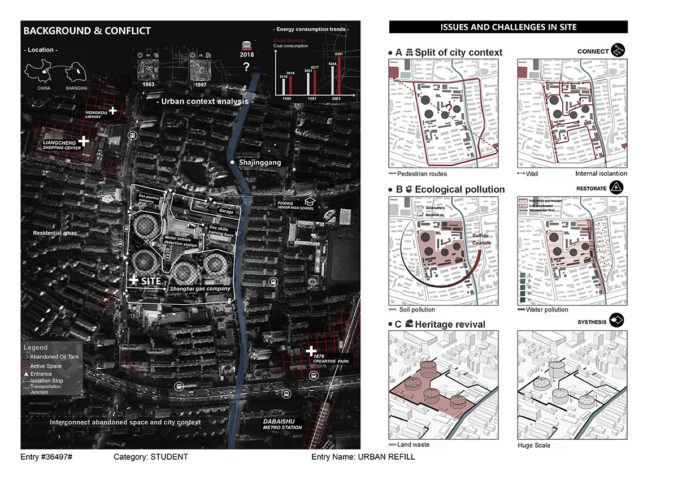
STRATEGY AND INTENTION
The streamline based on tour time sequence and space experience is a combination of the functions required by visitors and the rhythm of possible activities that may occur during park tours. By processing the primary and secondary streamlines, the design contains the structure and space of projections and the outdoor landscape space, which is derived from the commuting and sightseeing streamlines. Node linked by topographic slope, stairs and flat ground. These linkages create multi-layer spaces experience for city dwellers.
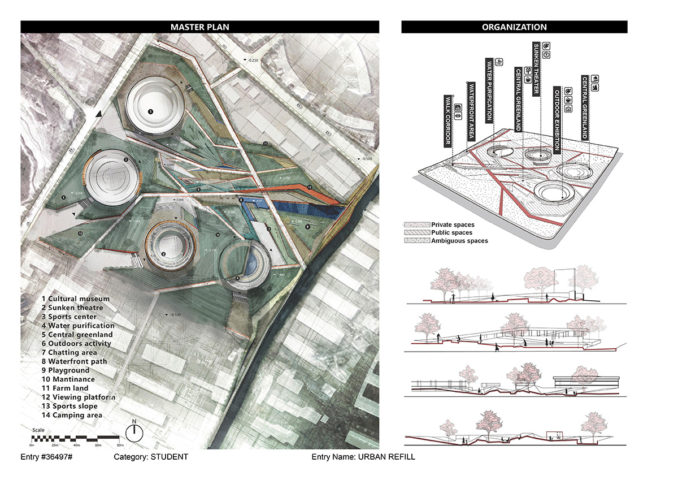
These rich space changes provide a coherent multi-layered experience of spatial feelings of light and shadow. At the same time, in this section, I also made use of surplus materials, weather-resistant steel plates, rust steel plates, etc., so that visitors could feel the trace of energy transformation and urban history in the narrative space streamline. Transforming the structure of existing facilities into a landscape spatial language is one of the key points in future design.
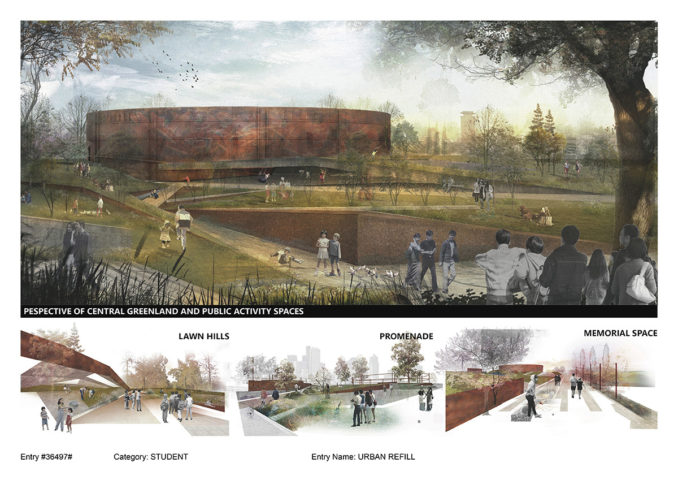
VISION AND PERSPECTIVE
Human and nature seem always to be in a state of confrontation, industry and nature also seem to be mutually exclusive. Ecological and sustainable are undoubtedly the two major design themes of brownfield park which just brings them to a state of harmony and self-adaptation.
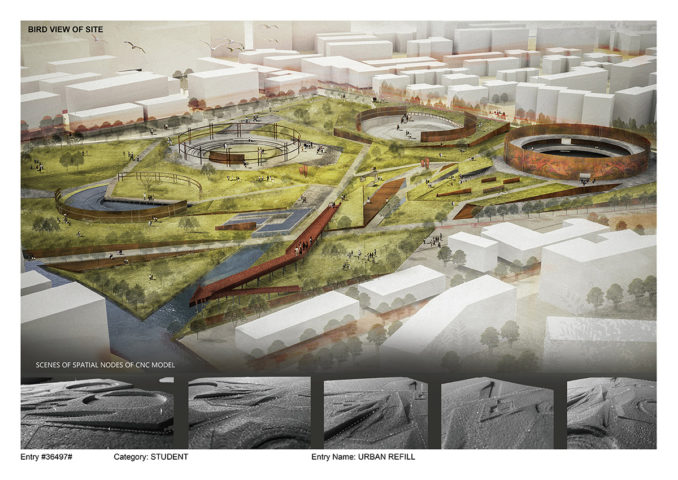
Through reprogramming different interfaces of these leftover oil tanks, and operation of interconnected flow, the project provides functional spaces for hierarchical vehicles, the reuse of this gas sales factory ventilates the small polluted city canal meanwhile provides a brand new lifestyle and living environment for city residents.
Urban Refill
Students – Jinyi Yang, Qingyi Li & Chongyang Ren

